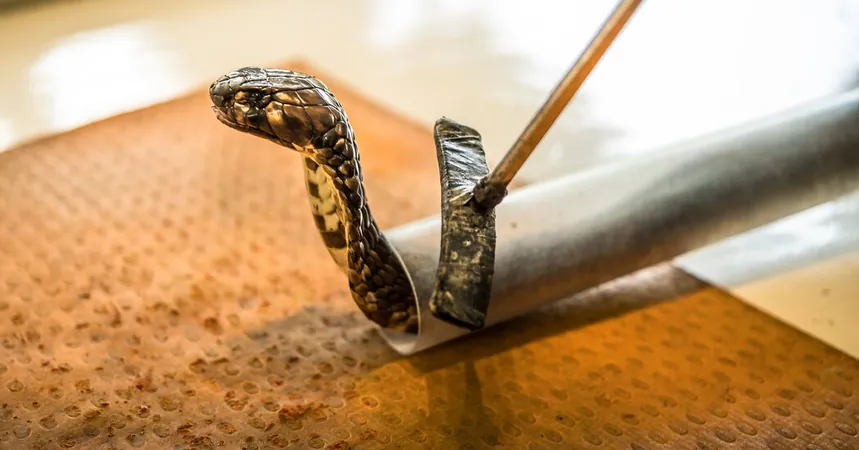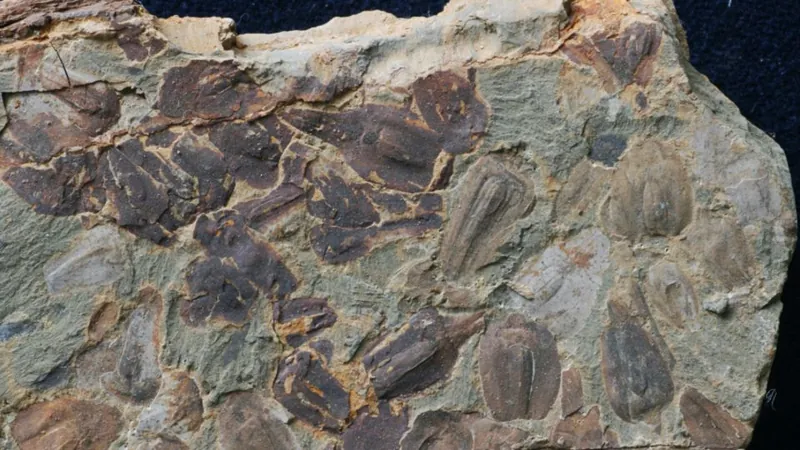
The Hidden Dangers of Snakebites in Africa: A Crisis Unraveled
2025-01-07
Author: Kai
Introduction
In a harrowing incident that highlights the lurking dangers of rural life in Africa, 11-year-old Beatrice Ndanu Munyoki became a victim of a snake bite while minding her family’s goats in Mwingi, Kenya. As she absentmindedly played with the dirt, a venomous red-headed snake struck her index finger, leading to a frantic rush to find medical help. Her father, David Mutunga, quickly fashioned a makeshift tourniquet and transported her via motorcycle taxi to the nearest hospital, only to discover that they lacked the appropriate antivenom for her specific snakebite.
The Consequences of Snakebites
Although Beatrice received treatment, her condition worsened, culminating in the amputation of her finger. This tragic outcome is part of a widespread issue in many parts of Africa, where human expansions into wildlife habitats, deforestation, and climate change have created a perilous overlap between snakes and communities. Annually, an estimated five million people suffer snakebites globally, leading to approximately 120,000 fatalities and around 400,000 amputations, though these figures may be considerably underestimated.
Rural Vulnerabilities
Snakebites frequently occur in rural settings where access to medical facilities is limited, compelling many victims to rely on traditional remedies or face dire consequences. Some regions lack trained medical personnel who can accurately identify and treat snakebites, resulting in misinformation about the seriousness of the injury. This ignorance can prove fatal, as exemplified by the story of Ruth Munuve, whose husband succumbed to a puff adder bite due to inadequate access to emergency care during the COVID-19 pandemic.
The Ecological Challenge
In sub-Saharan Africa, the ecosystem is home to a variety of dangerous snakes, including the cobra and the black mamba, each possessing potent venom that can kill or paralyze swiftly. Their ecological roles are often unrecognized, leading communities to kill snakes indiscriminately out of fear. However, researchers emphasize the importance of these creatures in maintaining balance in their habitats.
Challenges in Treatment
Efforts to combat the snakebite crisis face several hurdles, most notably the scarcity of effective antivenom. Many countries, particularly in sub-Saharan Africa, depend on a single source for antivenom, leading to issues with availability and efficacy against local snake species. Counterfeit or ineffective products have been a longstanding challenge, but recent regulatory efforts in Kenya aim to ensure only WHO-approved antivenoms make their way to the market.
Innovative Solutions
Educators and scientists are beginning to explore innovative solutions to improve snakebite prevention and treatment. For instance, advances in artificial intelligence are aiding in the identification of snakes, allowing more people to recognize potentially dangerous species. Meanwhile, alternative treatment methods, such as lab-developed monoclonal antibodies, are being researched to provide a universal antidote to snake venom without the adverse reactions often associated with traditional antivenom.
Community Awareness
Community awareness initiatives are also crucial. Education on snake behavior and first aid can significantly reduce the number of fatalities and severe injuries. Facilities like the Watamu Snake Farm in Kenya focus on educating the public on snake safety measures, including wearing protective footwear and keeping living spaces tidy to deter snakes from entering homes.
Conclusion
For Beatrice, life has changed dramatically after her brush with death. Despite the loss of her finger, she remains optimistic, having adapted to writing with her other fingers. Her experience is a sobering reminder of the quiet battles faced by communities living alongside wildlife and the urgent need to address the silent crisis of snakebite injuries across Africa. The time has come for greater investment in snakebite treatment and preventive education to safeguard both lives and livelihoods.



 Brasil (PT)
Brasil (PT)
 Canada (EN)
Canada (EN)
 Chile (ES)
Chile (ES)
 Česko (CS)
Česko (CS)
 대한민국 (KO)
대한민국 (KO)
 España (ES)
España (ES)
 France (FR)
France (FR)
 Hong Kong (EN)
Hong Kong (EN)
 Italia (IT)
Italia (IT)
 日本 (JA)
日本 (JA)
 Magyarország (HU)
Magyarország (HU)
 Norge (NO)
Norge (NO)
 Polska (PL)
Polska (PL)
 Schweiz (DE)
Schweiz (DE)
 Singapore (EN)
Singapore (EN)
 Sverige (SV)
Sverige (SV)
 Suomi (FI)
Suomi (FI)
 Türkiye (TR)
Türkiye (TR)
 الإمارات العربية المتحدة (AR)
الإمارات العربية المتحدة (AR)